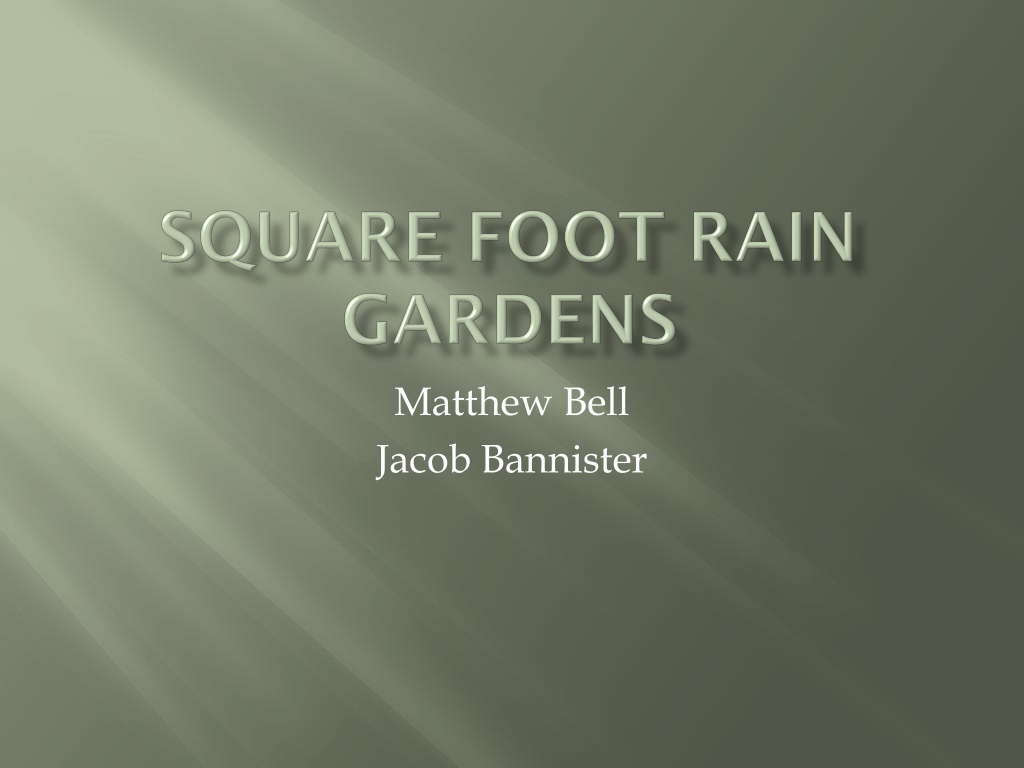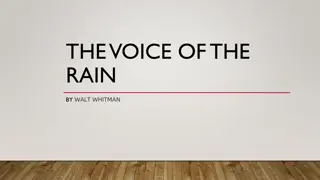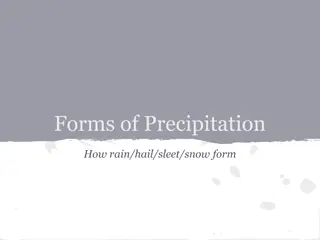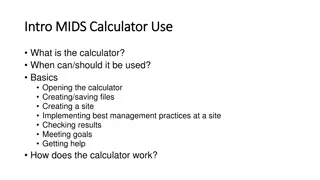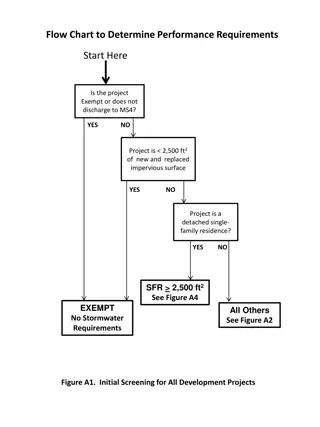Implementing Rain Gardens for Sustainable Stormwater Management
Rain gardens offer an affordable and effective solution for homeowners to reduce stormwater runoff on their property. They provide numerous benefits such as filtering pollution, conserving water, and enhancing wildlife habitats. While installation may require some initial costs, maintenance is minimal, making rain gardens a sustainable and eco-friendly landscaping option.
- Rain gardens
- Stormwater management
- Sustainable landscaping
- Eco-friendly practices
- Water conservation
Download Presentation

Please find below an Image/Link to download the presentation.
The content on the website is provided AS IS for your information and personal use only. It may not be sold, licensed, or shared on other websites without obtaining consent from the author. Download presentation by click this link. If you encounter any issues during the download, it is possible that the publisher has removed the file from their server.
E N D
Presentation Transcript
Matthew Bell Jacob Bannister
Rain Gardens offer homeowners an inexpensive and simple to implement option to reduce stormwater runoff on their property Rain Gardens can be an aesthetic addition to your property www.thisoldhouse.com
Rain Gardens offer many benefits. They will: Filter runoff pollution Recharge local groundwater Conserve water Improve water quality Protect rivers and streams Remove standing water in your yard Reduce mosquito breeding Increase beneficial insects that eliminate pest insects Reduce potential of home flooding Create habitat for birds and butterflies Enhance sidewalk appeal afbeducation.org
Rain Gardens are relatively inexpensive and easy to implement, but do have some material and time costs associated with installation. Installation requires: Excavation and creation of rain garden bed Replacement and amending of planting soil Transport and installation of plants Mulching finished bed Due to varying size, location, and site characteristics, costs of implementation can vary considerably. cityofpuyallup.org
Rain Garden maintenance is very minimal: Weeding during the first few years to promote desirable plant growth until they are established and can outcompete future weeds Removing dead plant growth at the start of each season Cut back plants as new growth begins A string trimmer may be used for quick clean up Replacing mulch as needed popebranch.blogspot.org
1. Do the Research and Plan: A successful rain garden takes careful thought and planning 2. Location Does Matter: Make sure your garden is at least 10 feet from the foundation of your house. 3. Work With Your Soil: Amend soil to balance drainage and retention depending on soil characteristics 4. Choose Plants Carefully: Choose plants tolerant of both temporary flooding and drought
Urban lawns may lack the area needed for rain garden installation Costs vary considerably depending on size, location, and installation procedure Perceived high costs and time investment
How the idea came about: While promoting rain gardens to the community, we had a hard time putting a cost and size to a rain garden. The idea was to simplify the build and cost.
There was also interest from renters, homeowners with limited space, or homeowners who wanted to get started but did not want to devote a lot of money or a lot of space
The goal is to have a rain garden that: 1. Can be used by someone with limited space 2. That the costs can be controlled for 3. That is expandable or removable
The essentials 1. (2) 8 foot 2x6 untreated 2. (1) 3 cubic feet of peat moss* 3. (1) 1 large bag of mulch* 4. (3) bags of topsoil* 5. (1) Roll of weed block fabric* 6. (12) 3 Decking screws 7. Downspout fittings*
Heath Aster Bottle Gentian Blue Flag Iris Obedient Plant Prairie Dropseed Little Blue Stem Mountain Mint Black-eyed Susan
Total Investment plants: $80-100
Total Investment: $140-160
Square foot rain gardens can be an urban option where space is limited Cost estimates are simple and controlled, and can be modified to meet individual needs Square foot rain gardens are simple to install, and can be easily removed Square foot rain gardens are easily maintained They create curb appeal in limited space
